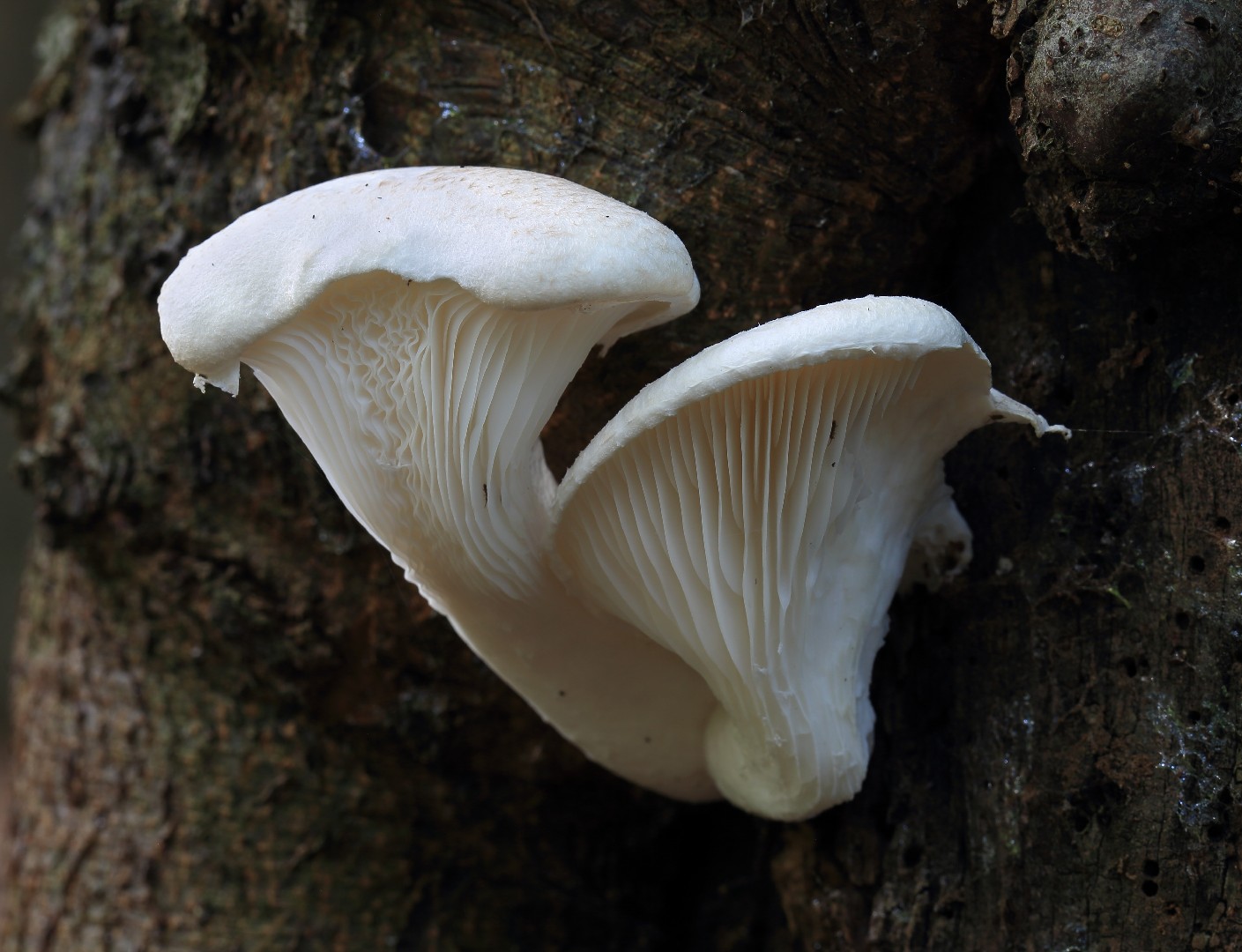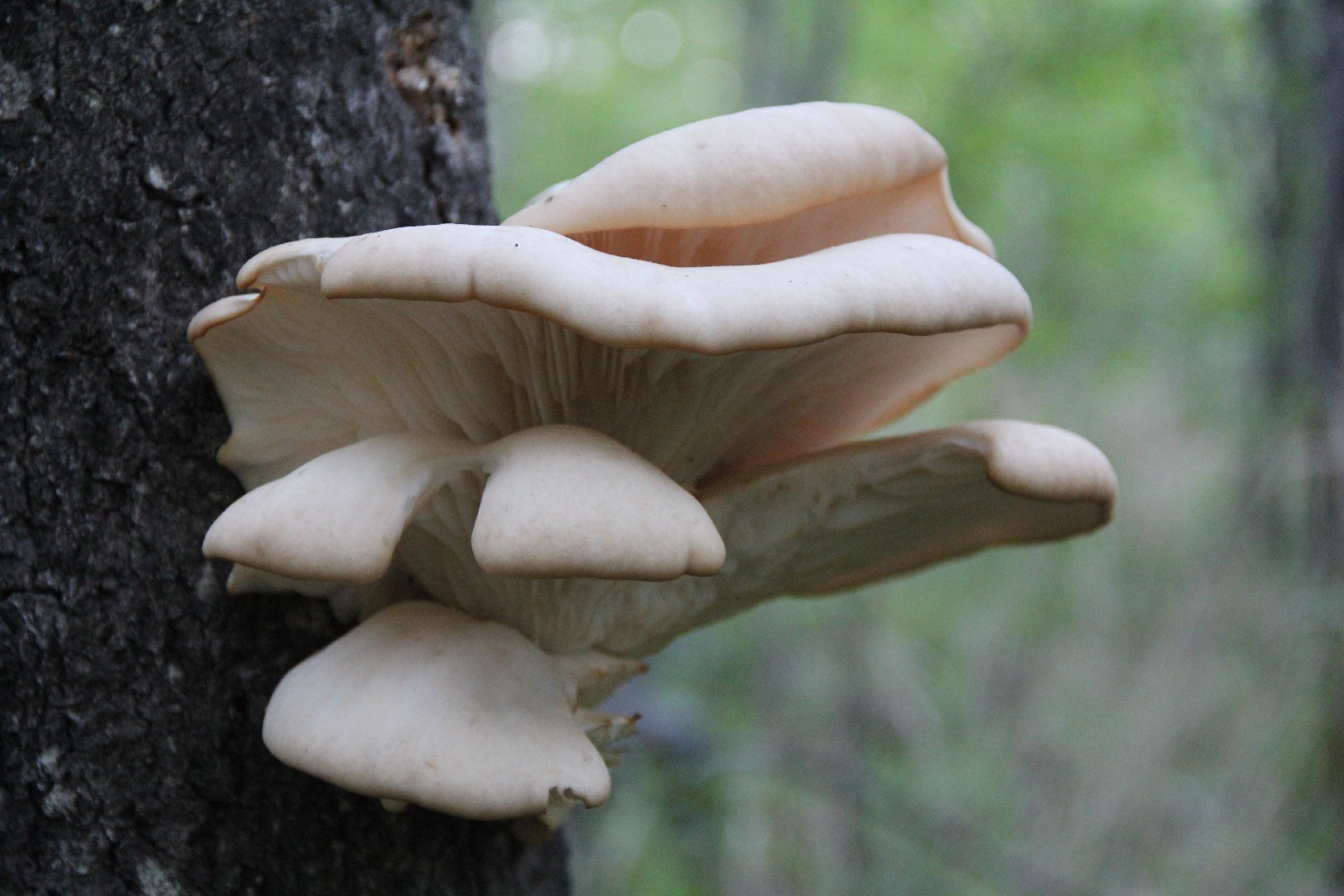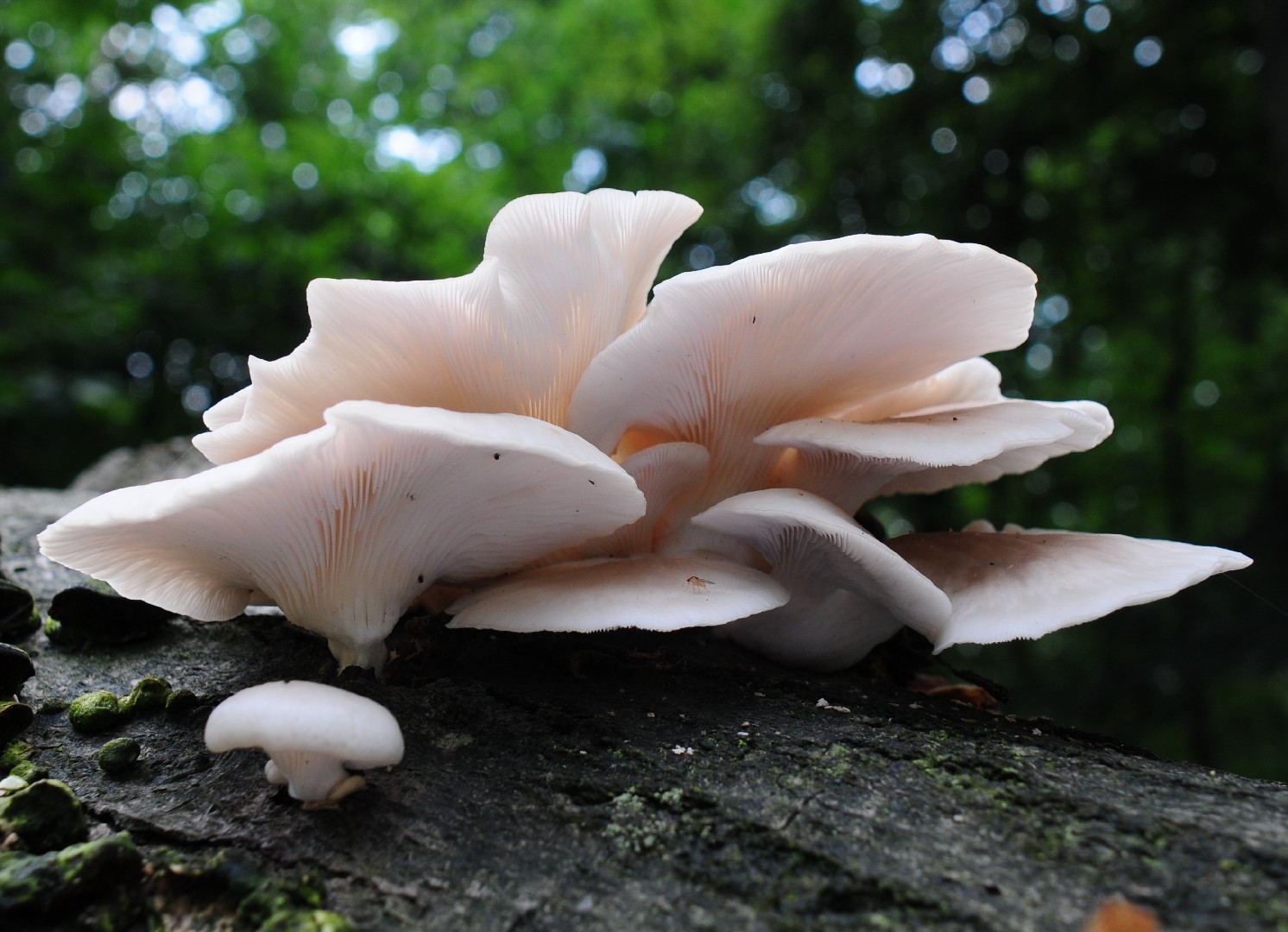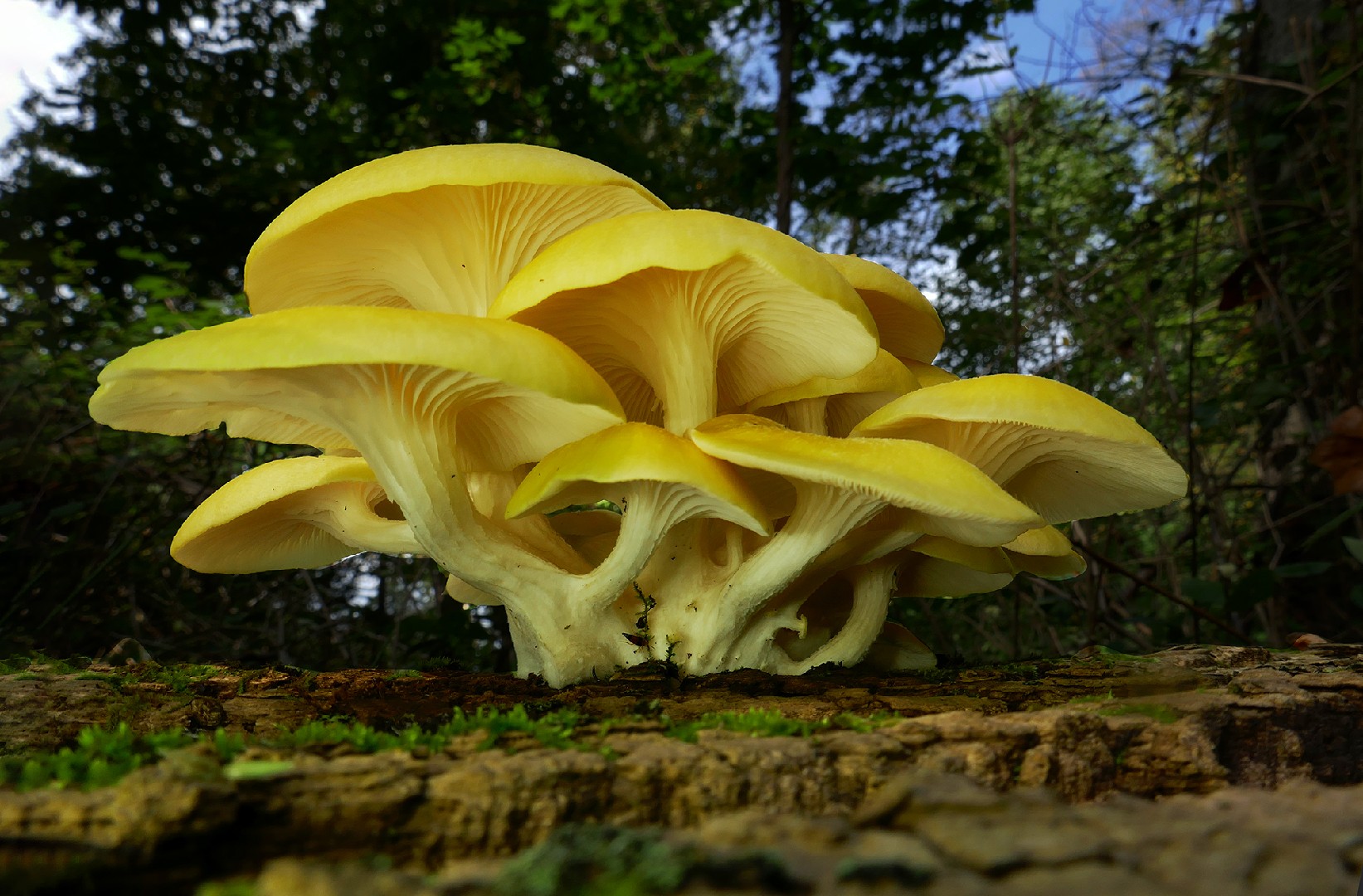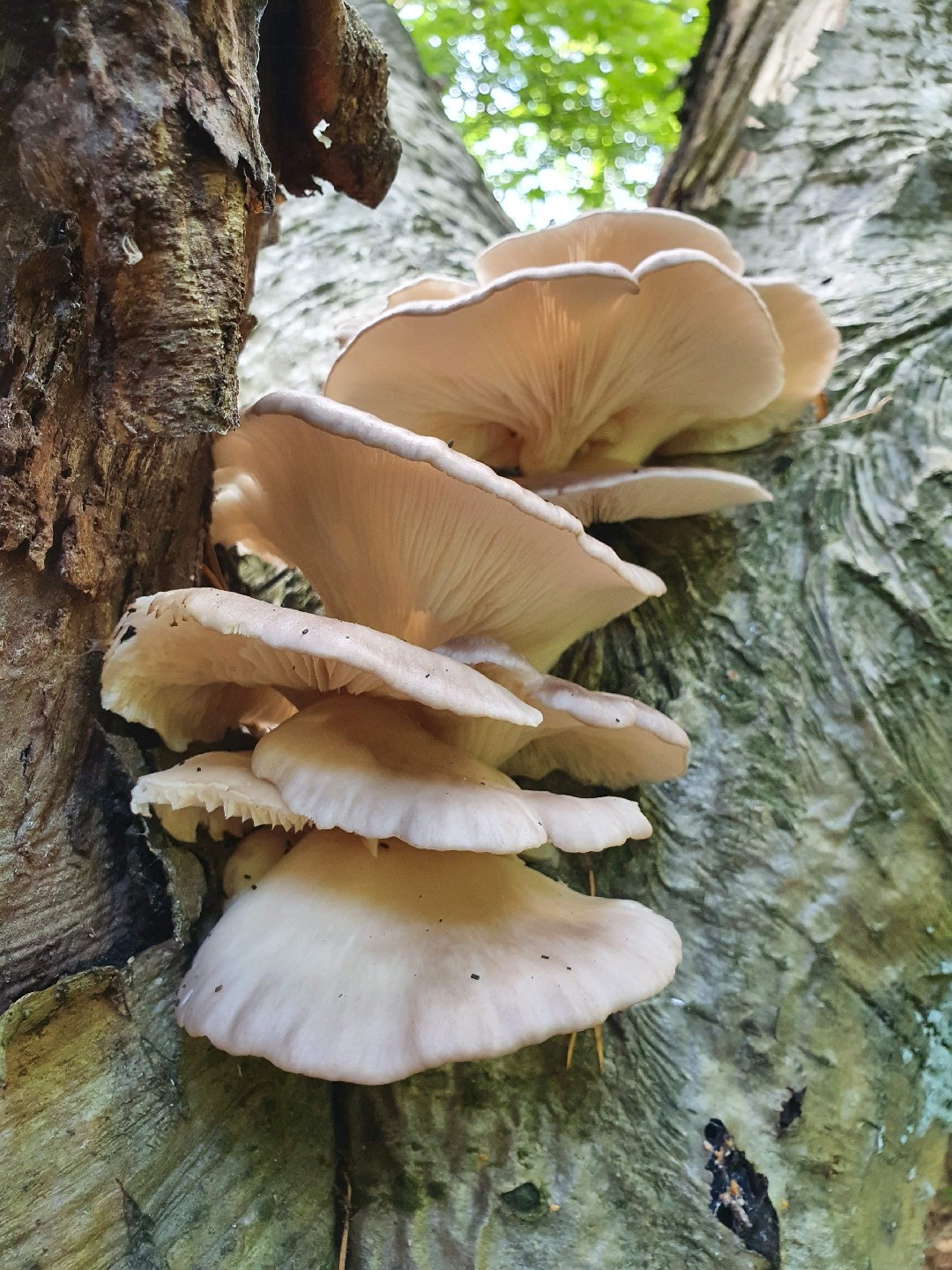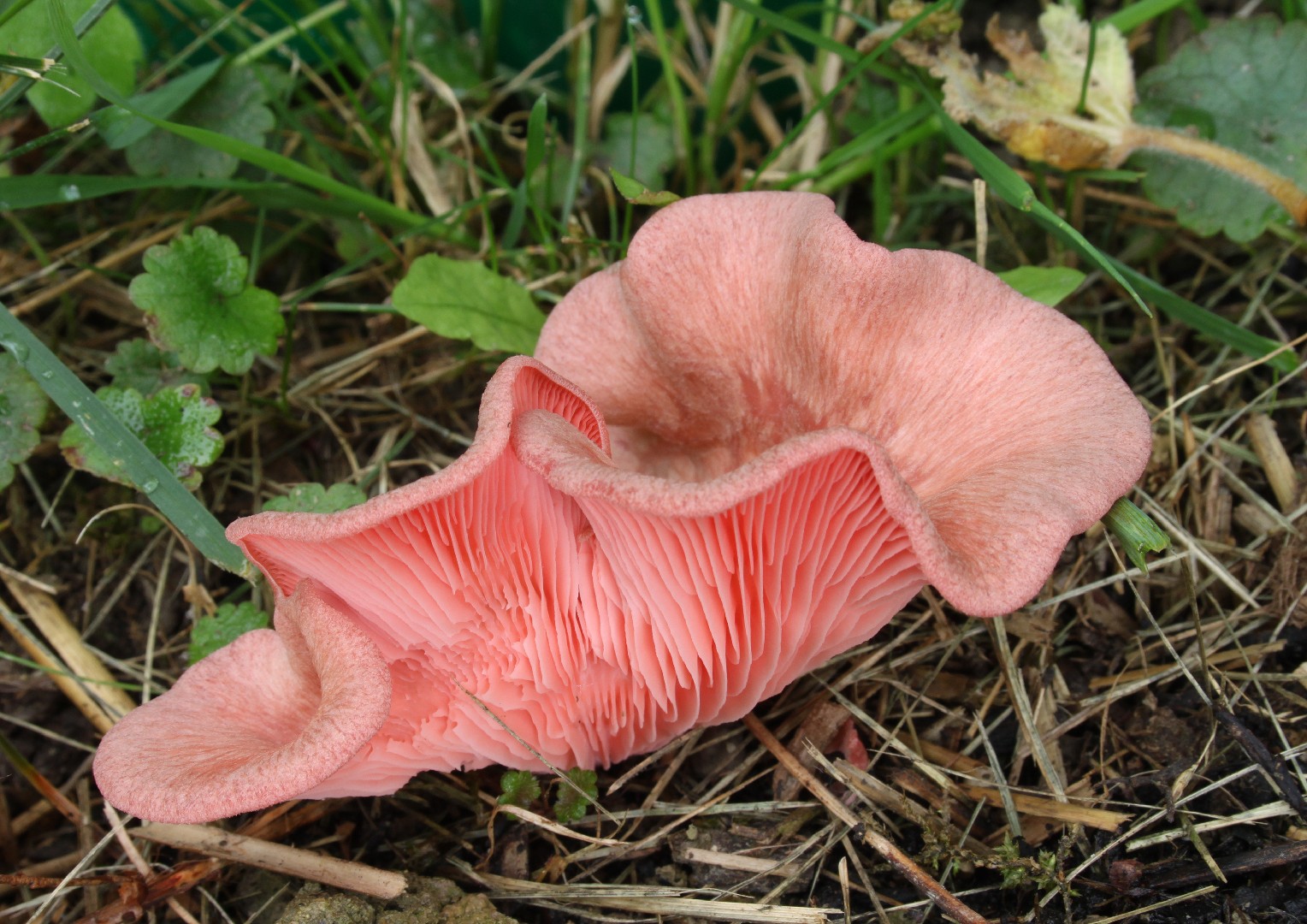Pleurotus
Nom scientifique: Pleurotus
Pleurotus
Nom scientifique: Pleurotus
 Photo By Liam O'Brien , used under CC-BY-4.0 /Cropped and compressed from original
Photo By Liam O'Brien , used under CC-BY-4.0 /Cropped and compressed from original La description
Les pleurotus sont des champignons assez connus, car certaines espèces, à l'instar de la Pleurotus ostreatus ou Pleurotus pulmonarius, sont comestibles et très prisées. Les pleurotes se reconnaissent à leur morphologie distincte: chapeau pourvu de lames, pied excentré et allure dissymétrique évocatrice d'une huître. Le nom y fait d'ailleurs référence, dérivant des mots grecs pleurá (côté) et oto (oreille). 
